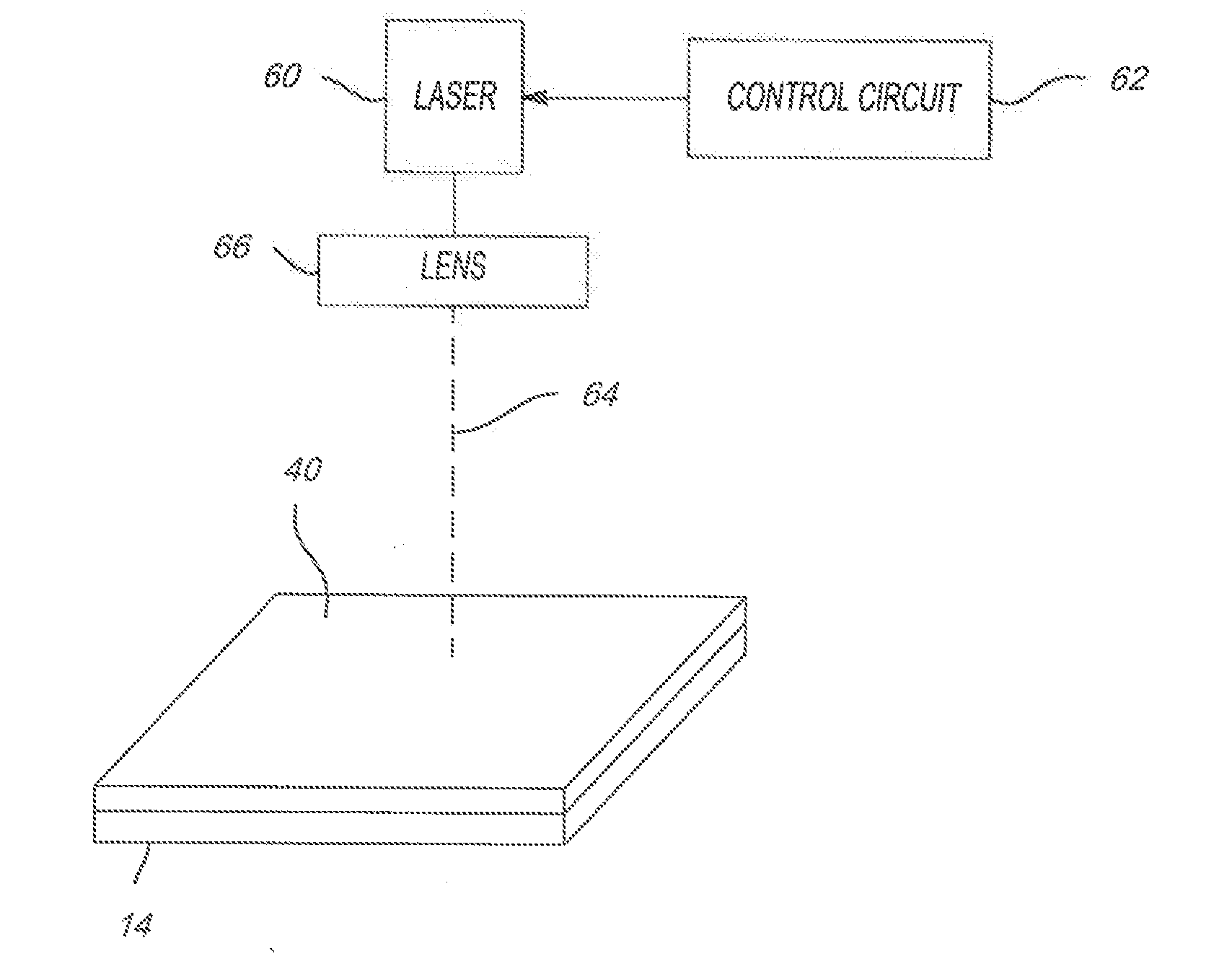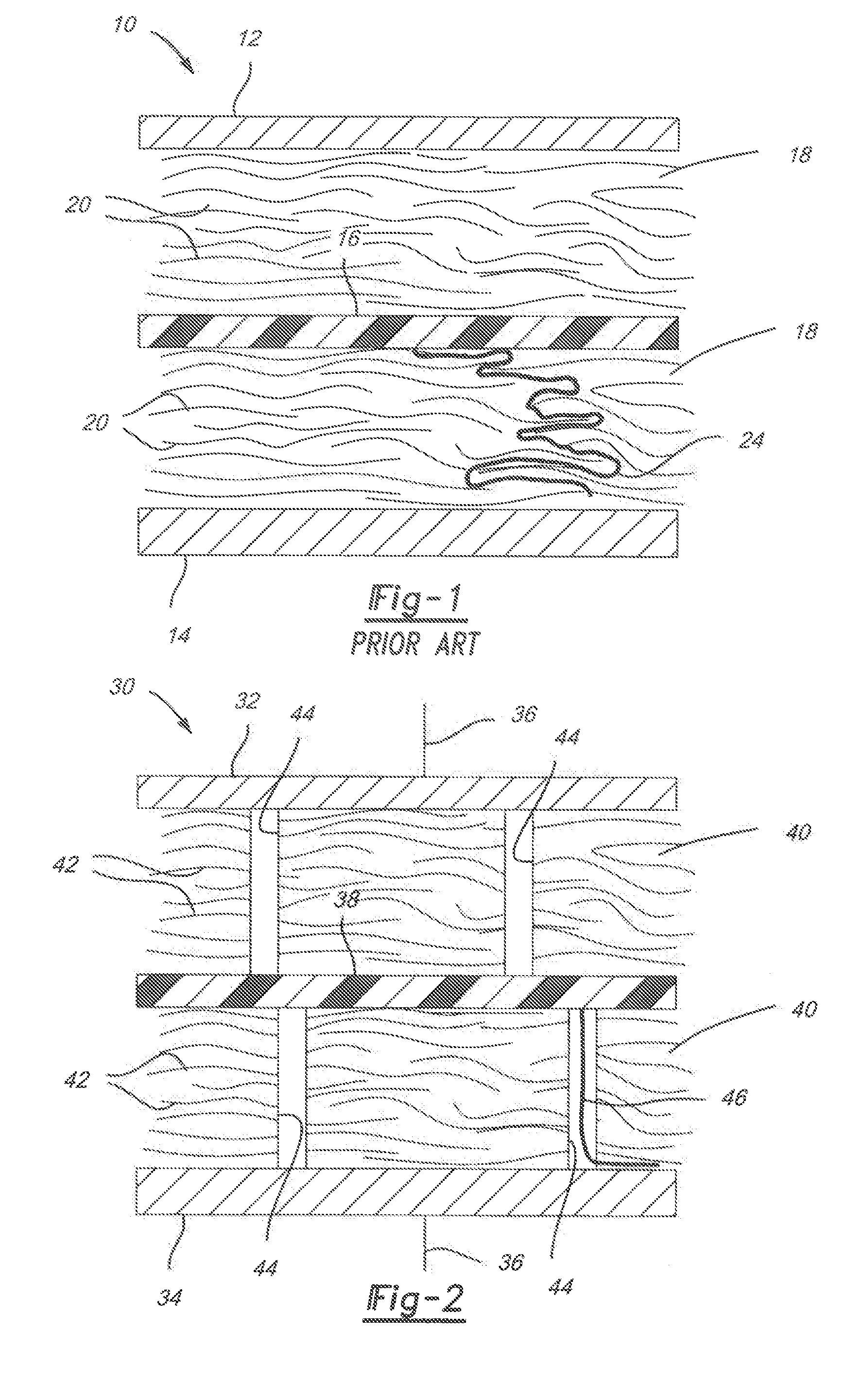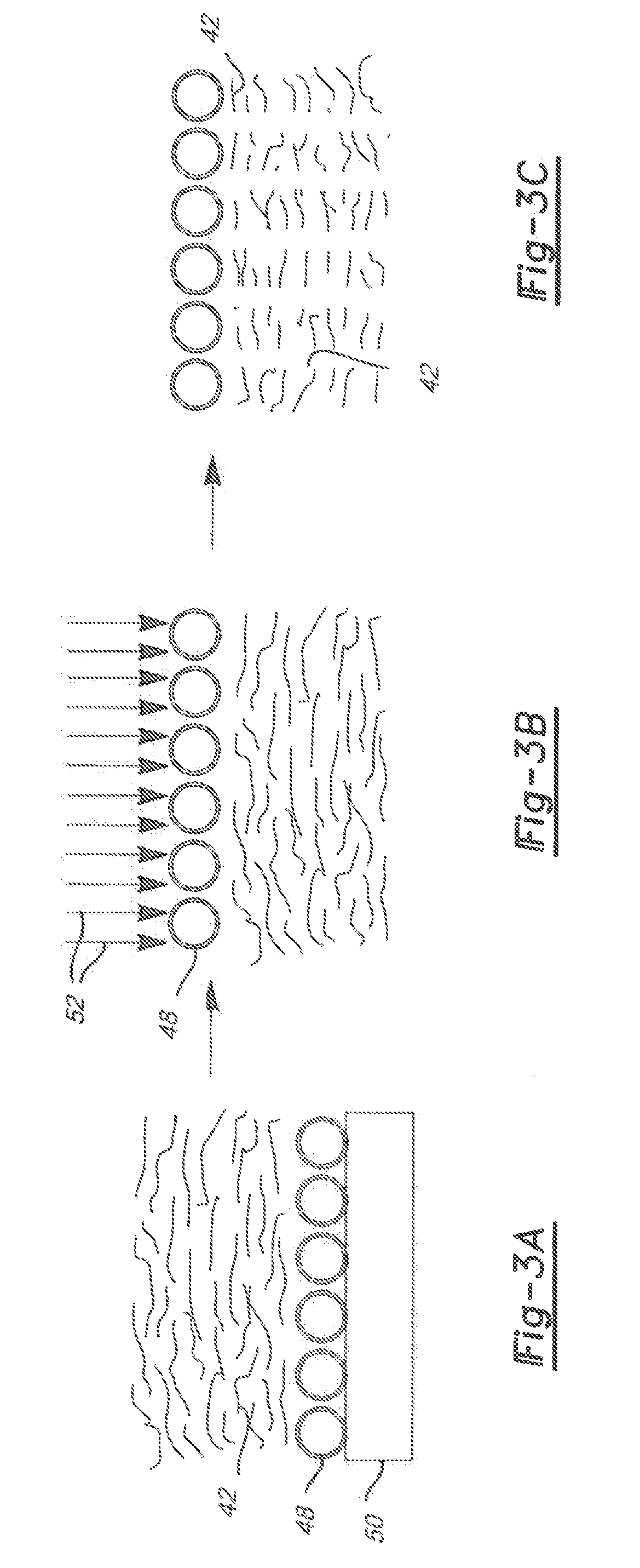Supercapacitor
a supercapacitor and capacitor technology, applied in the field of capacitors, can solve the problems of previously known supercapacitors that were limited to operate at low frequencies, and suffer from disadvantages, and achieve the effects of improving the frequency of operation, facilitating ionic transport within the electrode plane, and increasing the frequency of operation
- Summary
- Abstract
- Description
- Claims
- Application Information
AI Technical Summary
Benefits of technology
Problems solved by technology
Method used
Image
Examples
Embodiment Construction
[0036]With reference first to FIG. 2, a first embodiment of a supercapacitor or electrochemical capacitor 30 according to the present invention is shown. Like the previously known supercapacitors of FIG. 1, the supercapacitor 30 generally includes a pair of spaced apart metal current collectors 32 and 34 which are spaced apart by a few microns to a few hundred microns and are parallel to each other. Each current collector 32 and 34 is connected to its associated electrical circuit (not shown) by a lead 36.
[0037]A separator 38 constructed of an electrical insulating material, such as a porous polymer, is positioned in between the metal current collectors 32 and 34 and thus separates a pair of electrodes 40 from each other. Any conventional material may be used for the separator 38. In some embodiments, the separator 38 may be a porous, electrically insulating polymer or paper film which keeps the electrodes 40 from electrically contacting and discharging, while allowing ions to diffu...
PUM
 Login to View More
Login to View More Abstract
Description
Claims
Application Information
 Login to View More
Login to View More - R&D
- Intellectual Property
- Life Sciences
- Materials
- Tech Scout
- Unparalleled Data Quality
- Higher Quality Content
- 60% Fewer Hallucinations
Browse by: Latest US Patents, China's latest patents, Technical Efficacy Thesaurus, Application Domain, Technology Topic, Popular Technical Reports.
© 2025 PatSnap. All rights reserved.Legal|Privacy policy|Modern Slavery Act Transparency Statement|Sitemap|About US| Contact US: help@patsnap.com



